The reputation of Murano as centre of great glass makers started in 1291, when the Republic of Venice ordered the glassmakers of the city to move their foundries to Murano island. The point was to prevent the burning of buildings in the city, since most houses and buildings were made out of wood. At the end of the 16th century, three thousand out of seven thousand inhabitants on the island of Murano were involved in the glass industry.
For centuries, the glassmakers of Murano have been known for the quality of their products, and for the continuous development of techniques, such as the use of crystal or enamelled glass, the creation of items with golden threads (avventurine), the employment of multicolored (millefiori) or milky (lattimo) glass, and even the imitation of precious stones with glass. Today, the artisans of Murano still use these old techniques for the creation of contemporary art glass items.
In Murano there are both factories producing glassware for the mass marketing, and little workshops creating unique pieces. Palazzo Giustiniani in Venice hosts the Glass Museum, whose exhibitions tell the history of glass starting from ancient Egypt.
Murano glass items have been produced in large quantities between the ‘50s and ‘60s for export and for tourism. Some of the historical glass factories in Murano are well-known brands, including Venini, Salviati, Barovier & Toso, Pauly & c., FerroMurano, Seguso, and many others. The oldest glass factory, still operating, is the Antica Vetreria Fratelli Toso, founded in 1854.
Items created by: Murano

Murano glass centerpiece - Cordonati oro - Ercole Barovier 1950s
- 15 requests for this object
More

Murano glass vase - Cordonati oro - Ercole Barovier 1950s
- 17 requests for this object
More

Murano glass bottle - Fasce orizzontali - Fulvio Bianconi for Venini - 1950s
- 32 requests for this object
More

Murano glass stand - Vittorio Zecchin for M.V.M Cappellin - 1920s
- 15 requests for this object
More

Murano glass sculpture - Lumberjack - Archimede Seguso 1950s
- 8 requests for this object
More

Murano glass vase - Morbidi - Toni Zuccheri for Barovier & Toso 1985
- 3 requests for this object
More

Murano glass vase - Opalino - Venini 1950s
- 12 requests for this object
More

Murano glass bowl - Zebrati - Ercole Barovier 1940s
- 10 requests for this object
More

Murano glass bottle - Alabastro - Archimede Seguso 1950s
- 4 requests for this object
More

Glass centrepiece - A fasce applicate - Carlo Scarpa for Venini 1940s
- 19 requests for this object
More
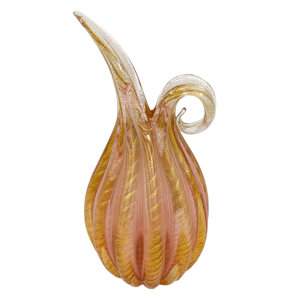
Murano glass pitcher - Cordonati oro - Barovier & Toso 1950s
- 8 requests for this object
More

Murano glass vase - Luciano Gaspari for Salviati 1960s
- 6 requests for this object
More

Murano glass vase - Clio - Sergio Asti for Salviati 1960s
- 4 requests for this object
More

Murano glass fish - Archimede Seguso - Italy 1950s
- 7 requests for this object
More

Murano glass Cornucopia - Archimedes Seguso - Italy 1950s
- 8 requests for this object
More

Murano glass obelisk - Seguso - Italy 1950s
- 3 requests for this object
More

Murano glass jug - Peter Pelzel and Luciano Vistosi - 1960s
- 3 requests for this object
More


Murano glass putto - Pino Signoretto - Italy 1980s
- 2 requests for this object
More


Murano glass vase - Antonio Ferro for A.Ve.M. - Italy 1950s
- 2 requests for this object
More


Murano glass centerpiece - Barovier & Toso - 1940s
- 10 requests for this object
More


Murano glass shell - Archimedes Seguso 1950s
- 13 requests for this object
More


Murano glass bottle - Horizontal bands - Fulvio Bianconi for Venini
- 9 requests for this object
More


Murano glass bottle - Bolle - Tapio Wirkkala for Venini 1960s
- 32 requests for this object
More

Murano glass vase - Archimede Seguso - Italy 1950s
More

Murano glass horse - Ottone Ferro for A.Ve.M. - 1930s
- 14 requests for this object
More

Murano glass candle holder - Fulvio Bianconi for Venini & C. 1950s
- 9 requests for this object
More

Murano glass bowl - Alfredo Barbini - Italy 1950s
- 10 requests for this object
More
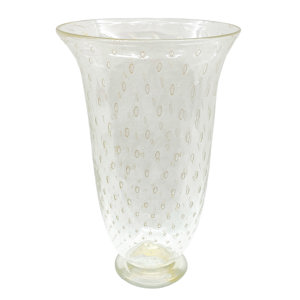
Murano glass vase - Archimede Seguso - Italy 1950s
- 16 requests for this object
More

Murano glass vase - Dino Martens for A.VE.M. - Italy 1950s
- 9 requests for this object
More

Murano glass sculpture - Pantalone - L. Ferro for A.VE.M. - 1960s
More

Murano glass sculpture - Arlecchino - L. Ferro for A.Ve.M. - 1960s
- 9 requests for this object
More

Murano glass clown - Aldo Nason for A.Ve.M. - 1950s
More

Murano glass sculpture - Arlecchina - Aldo Nason for A.Ve.M. - 1950s
- 2 requests for this object
More

Murano glass fish - Luciano Ferro for A.Ve.M. - 1950s
- 2 requests for this object
More

Murano glass plaque - Emilio Nason for A.Ve.M. - Italy 1940s
- 2 requests for this object
More

Murano glass jug - A.Ve.M. - Italy 1930s
- 12 requests for this object
More

Murano glass sculpture - Lion - Aldo Nason for A.Ve.M. - 1950s
- 14 requests for this object
More

Murano glass plate with gold foil - Seguso - Italy 1960s
- 3 requests for this object
More

Murano glass vase - Dino Martens for A.Ve.M. - 1950s
- 8 requests for this object
More

Murano glass vase - Barbarico - Barovier & Toso 1950s
- 1 requests for this object
More

Murano glass vase - Incisi - Paolo Venini 1956
- 8 requests for this object
More

Murano glass sculpture - swallow - A.Ve.M. 1950s
- 4 requests for this object
More

Murano glass sculpture - Aldo Nason for A.Ve.M. 1950s
More

Blue Murano glass centerpiece - Venini - Italy 2000
- 7 requests for this object
More

Murano glass vase - Windows - Anzolo Fuga for A.Ve.M.
- 10 requests for this object
More

Murano glass amphora - Fratelli Toso - Italy early 1900s
- 13 requests for this object
More

Murano glass sculpture - Luciano Ferro for A.Ve.M. - 1960's
- 1 requests for this object
More

Pair of Murano glass swans - Archimede Seguso - 1950s
- 5 requests for this object
More
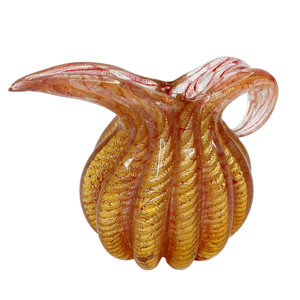
Small Murano glass jug - Cordonati oro - Barovier & Toso 1950s
- 12 requests for this object
More

Murano glass centerpiece - Antonio da Ros for Cenedese 1960s
- 5 requests for this object
More

Murano glass vase - Ercole Barovier - Italy 1930s
More

Murano glass bottle with gold foil - Salviati - Italy 1980s
- 1 requests for this object
More

Murano glass vase - Chiacchiera - Toots for Venini - Italy 1984
- 6 requests for this object
More

Murano glass bottle - Aava - Sarpaneva for Venini - 1992
- 10 requests for this object
More

Murano glass bottle - Aava - Sarpaneva for Venini - 1992
- 8 requests for this object
More

Murano glass plate - Wirkkala for Venini - 1986
- 15 requests for this object
More

Murano glass bottle - Bolle - Wirkkala for Venini 1980s
- 15 requests for this object
More

Murano glass bottle - Bolle - Wirkkala for Venini 1980s
- 16 requests for this object
More

Murano glass bottle - Bolle - Wirkkala for Venini 1981
- 7 requests for this object
More

Murano glass bottle - Morandiane- Gio Ponti for Venini 1982
- 9 requests for this object
More

Murano glass bottle - Morandiane - Gio Ponti for Venini 1982
- 5 requests for this object
More

Murano glass cup - Carlo Scarpa for Venini 1976
- 11 requests for this object
More

Murano glass vase - Uppsala - Thorssen and Karlsson for Venini 1980s
- 4 requests for this object
More

Murano glass sculpture - Woman - Fulvio Bianconi for Venini 1991
- 4 requests for this object
More


Murano glass vase - Barovier & Toso - Italy 1990s
- 7 requests for this object
More


Murano glass vase - Barovier & Toso - Italy 1990s
- 19 requests for this object
More

Murano glass canoe - Tobia Scarpa for Venini - 1950s
- 11 requests for this object
More

Murano glass amphora - Aurati - C. Scarpa for Venini - 1930s
- 22 requests for this object
More

Murano glass vase - Veronese - C.V.M. - Italy 1910s
- 2 requests for this object
More

Murano glass centerpiece - Bands - Anzolo Fuga for A.Ve.M - 1950s
- 4 requests for this object
More

Murano glass mosaic - Pauly & C. - C.V.M. 1920s
- 6 requests for this object
More

Murano glass vase - Corrosi - Carlo Scarpa for Venini - 1930s
- 20 requests for this object
More

Murano glass paperweight - A.Ve.M. - Italy 1980s
- 3 requests for this object
More

Murano glass sculpture - Lucio Bubacco - early 2000s
- 18 requests for this object
More

Murano glass cup with sculpture - Lucio Bubacco 1990s
- 20 requests for this object
More

Murano glass shell - Dino Martens for F.lli Toso - Italy 1950s
- 4 requests for this object
More

Il Cavallino di Venini - by Alessandro Mendini and Pino Signoretto - Murano
- 11 requests for this object
More

Murano glass sculpture - Sogni Infranti - Mario Bellini for Venini 1992
- 11 requests for this object
More

Oval mirror with Murano glass frame - Italy 1970s
More

Murano glass vase - Thomas Stearns for Venini - Italy 1960s
- 9 requests for this object
More


Murano glass basket - Barovier & Toso - Italy 1940s
- 1 requests for this object
More

Murano glass bowl - Carlo Scarpa for Venini - Italy 1940s
- 6 requests for this object
More

Murano glass bowl - Seguso - Italy 1940s
- 5 requests for this object
More

Murano glass essence bottle - A.Ve.M. - Italy 1970s
- 2 requests for this object
More

Murano glass bowl - Venini - Italy 1950s
- 2 requests for this object
More

Murano glass vase - Battuti - Carlo Scarpa for Venini - Italy 1940s
- 10 requests for this object
More

Murano glass vase - Battuti - Carlo Scarpa for Venini - Italy 1940s
- 8 requests for this object
More

Murano glass vase - Battuti - Carlo Scarpa for Venini - Italy 1940s
- 9 requests for this object
More


Murano glass sculpture - Lucio Bubacco - Italy 1990s
- 5 requests for this object
More

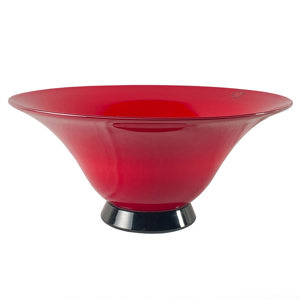
Centrepiece in Murano glass - Venini - Italy 1994
- 2 requests for this object
More


Murano glass vase - Kukinto series - Sarpaneva for Venini - Italy 1995
- 4 requests for this object
More


Murano glass bottle - Aava series - Sarpaneva per Venini 1990
- 4 requests for this object
More
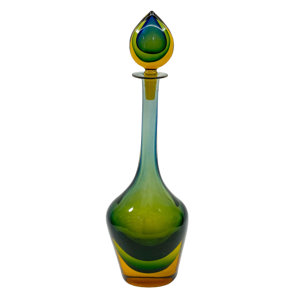
Murano glass bottle - Flavio Poli for Seguso - Italy 1950s
- 2 requests for this object
More
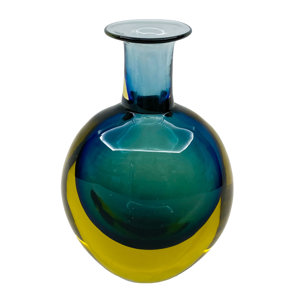
Murano glass vase - Flavio Poli for Seguso - Italy 1950s
- 1 requests for this object
More
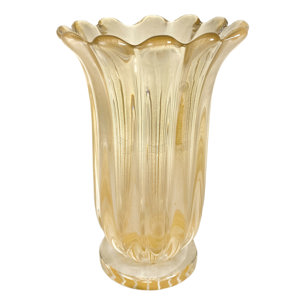
Murano glass vase with gold foil - Archimede Seguso - Italy 1950s
- 2 requests for this object
More

 Text via WhatsApp
Text via WhatsApp